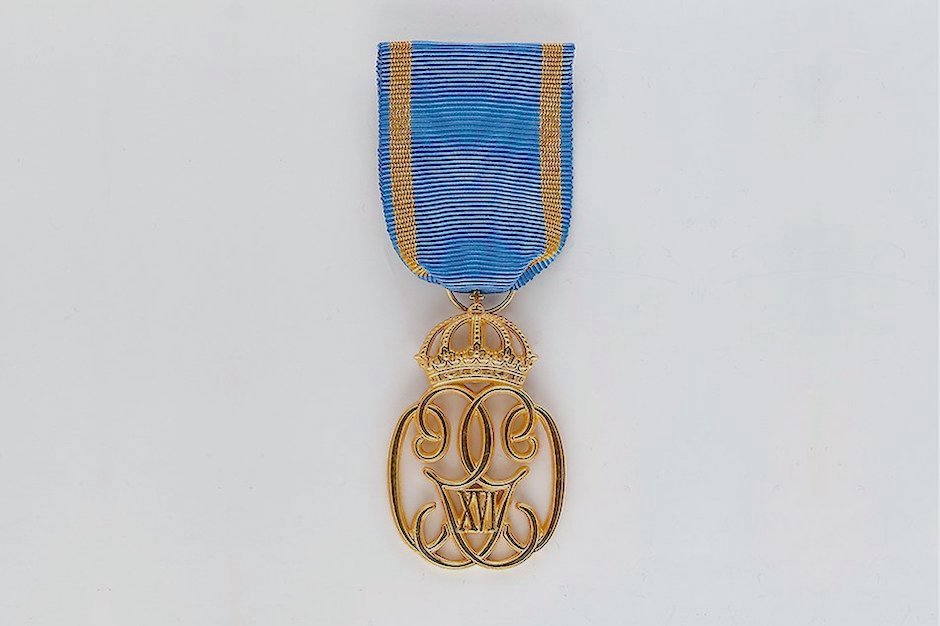Royal Jubilee Commemorative Medals

Within royal houses, there has been a tradition of awarding jubilee and commemorative medals - intended for wear - on various occasions in connection with certain significant jubilees or events within a royal house.
An Old Tradition
Royal commemorative medals refer to commemorative tokens distributed in connection with certain significant days within the royal house. They constitute a kind of personal gift of honor and are usually awarded to royal relatives, members of the royal court and senior officials and military officers.
There is an older tradition around commemorative commemorative tokens, of which Gustav III's sponsor token for the 45 godparents of Crown Prince Gustav (IV) Adolf, born in 1778, is a notable example.
The first Swedish commemorative token in the modern sense is King Oscar II's Jubilee Commemorative Medal from 1897 on the occasion of his 25th anniversary as regent (abbreviation OII:sJmt). The role model must have been Queen Victoria of the United Kingdom-s commemorative medal on the occasion of her 50th anniversary as regent in 1887. In the Kingdom of Württemberg (Germany), King Karl I instituted a commemorative medal in 1889 on the occasion of his 25 years as monarch.
The first Nordic commemorative token was added on the occasion of the gold wedding of Denmark's King Christian IX and Queen Louise in 1892, which received a Swedish equivalent through Crown Prince Gustaf (V) and Crown Princess Victoria's Silver Wedding Medal in 1906 (Swedish abbreviation GVSbm) and the King Oscar II and Queen Sofia's Golden Wedding Medal in 1907 (OIISGbmt).
King Gustaf V instituted a commemorative medal both for the 70th birthday anniversary in 1928 (GV:sJmt) and for the 90th birthday anniversary in 1948 (GV:sJmtII). In memory of King Gustaf V, the King Gustaf V's Commemorative Medal (GV:sMt) was instituted in 1951, which was awarded to his court. King Gustaf VI Adolf instituted a commemorative medal for the 85th anniversary in 1967 (GVIA:sMM).
Carl XVI Gustaf's jubilee commemorative token (CXVIG:sJmt) on the occasion of the 50th birthday anniversary
Established in court protocol on March 18, 1996, designed by the sculptor Ernst Nordin. In this sign, H.H. is depicted. The king's mirror monogram, which was created by master engraver Lennart Askwall. Starting from monograms follows the tradition from GV:sJmt.
Crown Princess Victoria and Prince Daniel's Wedding Commemorative Medal (VD'sBMM)
Established in court protocol on June 8, 2010, designed by heraldic artist Vladimir A. Sagerlund (obverse) and sculptor Annie Winblad Jakubowski (obverse). DD.KK.HH is visible on the reverse side. The Crown Princess and Prince Daniel's joint monogram and on the reverse there are portraits of both of them. The medal is made of sterling silver by the Mint and is worn in the light blue ribbon of the Seraphim Order. The medal follows the tradition of GVSbm.
A unique specimen in 18 carat gold was given to the organizer of the wedding, H.M. The King's Chief of Staff, Major General Håkan Pettersson.
King Carl XVI Gustaf's Jubilee Commemorative Medal (CXVIG'sJmtII) on the occasion of the 40th anniversary of his reign
Established in court minutes on August 28, 2013, drawn by the superintendent of the order Tom C. Bergroth and using Ernst Nordin's portrait from 1999. The oval sign in gold (gilt fine silver) of the 9 ½ size is manufactured by the company Sporrong AB in Ekenäs ( Finland). Worn in the ribbon of the Order of Seraphim equipped with four gold embroidered stripes, which represent four decades on Sweden's throne.
King Carl XVI Gustaf's Jubilee Commemorative Medal (CXVIG'sJmtIII) on the occasion of the 70th anniversary
Established in court minutes on April 4, 2016, drawn by order superintendent Tom C. Bergroth based on master engraver Lennart Askwall's mirror monogram (see CXVIG'sJmt). The sign's surface treatment is completely copied from court silversmith Baron Erik Fleming's beautiful and distinctive commemorative sign from 1948. The openwork , cast and in gold (gilded fine silver) is manufactured by Svenska Medalj AB in Eskilstuna, where toolmaker Stefan Siljemar made the digital version. On the reverse side of the crown are the years 1946 and 2016 with the date 30/4. The openwork monogram for a jubilee commemorative medal follows the tradition of GV:sJmtII and OIISGbmt.
This Medal can be seen in the picture above.